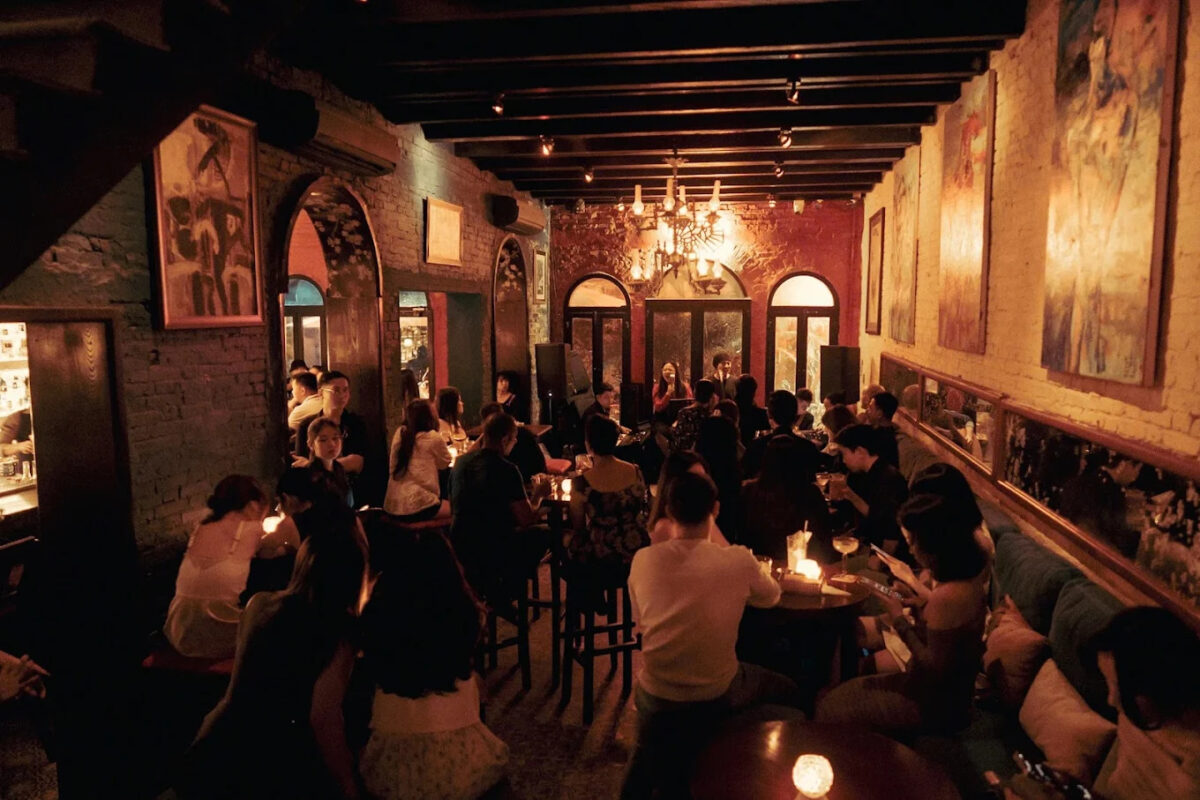Planning your Vietnam travel itinerary for one week? It’s easy to feel overwhelmed. With so many incredible places to visit, many travelers try to fit everything from Hanoi to Ho Chi Minh City into seven days. That often leads to rushed days, long transfers, and a trip that feels more like a checklist than a real experience.
This 7-day Vietnam itinerary takes a more thoughtful approach. Instead of racing across the country, it focuses on the South, where you can enjoy a mix of vibrant cities, cool highlands, and peaceful islands. You’ll begin in Saigon, explore the Mekong Delta, breathe in the fresh air of Da Lat, and end with sunsets in Phu Quoc.
Whether this is your first time in Vietnam or a return visit, the goal is simple: experience each place deeply, connect with the people, and leave with stories that stay with you. This one-week Vietnam travel itinerary is your invitation to fall in love with the country, one day at a time.
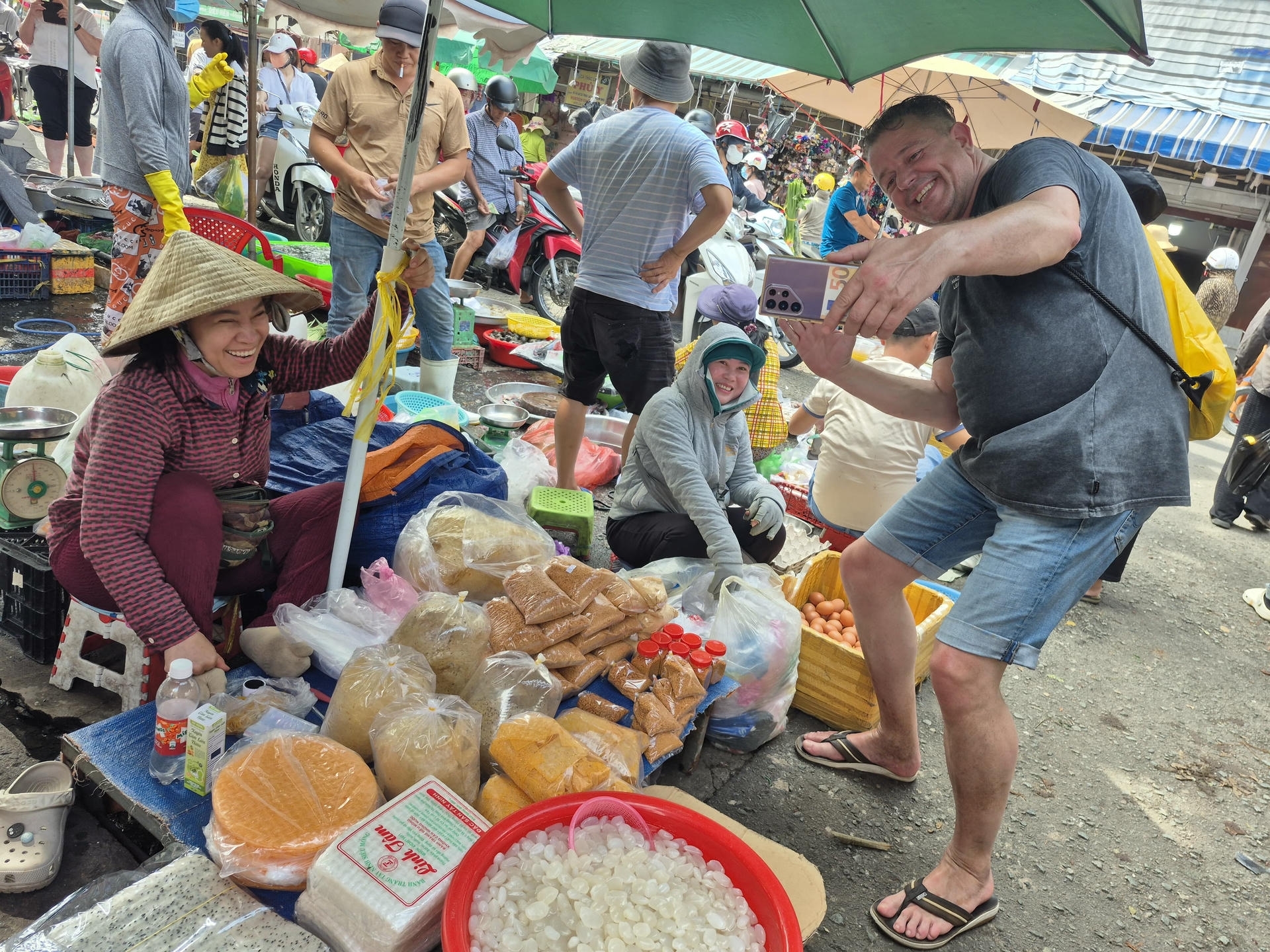
Why your Vietnam travel itinerary should start from the South instead of the North?
For a one-week Vietnam travel itinerary, starting in the South is both practical and rewarding. Ho Chi Minh City is Vietnam’s busiest international gateway, with frequent flights and smooth onward travel to destinations like Da Lat and Phu Quoc. The route from city to highland to island flows naturally, saving you from long transfers and giving you more time to enjoy each place.
But the choice is not just practical. One of the beautiful things about Vietnam is the subtle differences between North and South. In the South, people tend to be more open and relaxed, shaped by centuries of migration and trade. The climate is warmer, the language softer, the food sweeter. You’ll feel it in the street markets, in the way vendors talk to you, in the flavor of a bowl of hủ tiếu compared to northern phở. For travelers, this makes Southern Vietnam an easier place to ease in, especially if it’s your first time in the country.
The reasons to love Vietnam go beyond landscapes. It’s the way life spills onto the sidewalks, the way people offer you fruit on the bus, the mix of old rituals and modern rhythms that live side by side. Starting in the South lets you feel these things up close, without rushing. Then, if you continue northward, you’ll start to notice the changes and appreciate each region even more. That contrast, that flow, is part of what makes Vietnam unforgettable.
Vietnam Travel Itinerary: 7 Days to Fall in Love with the Country
Day 1–2: Ho Chi Minh City
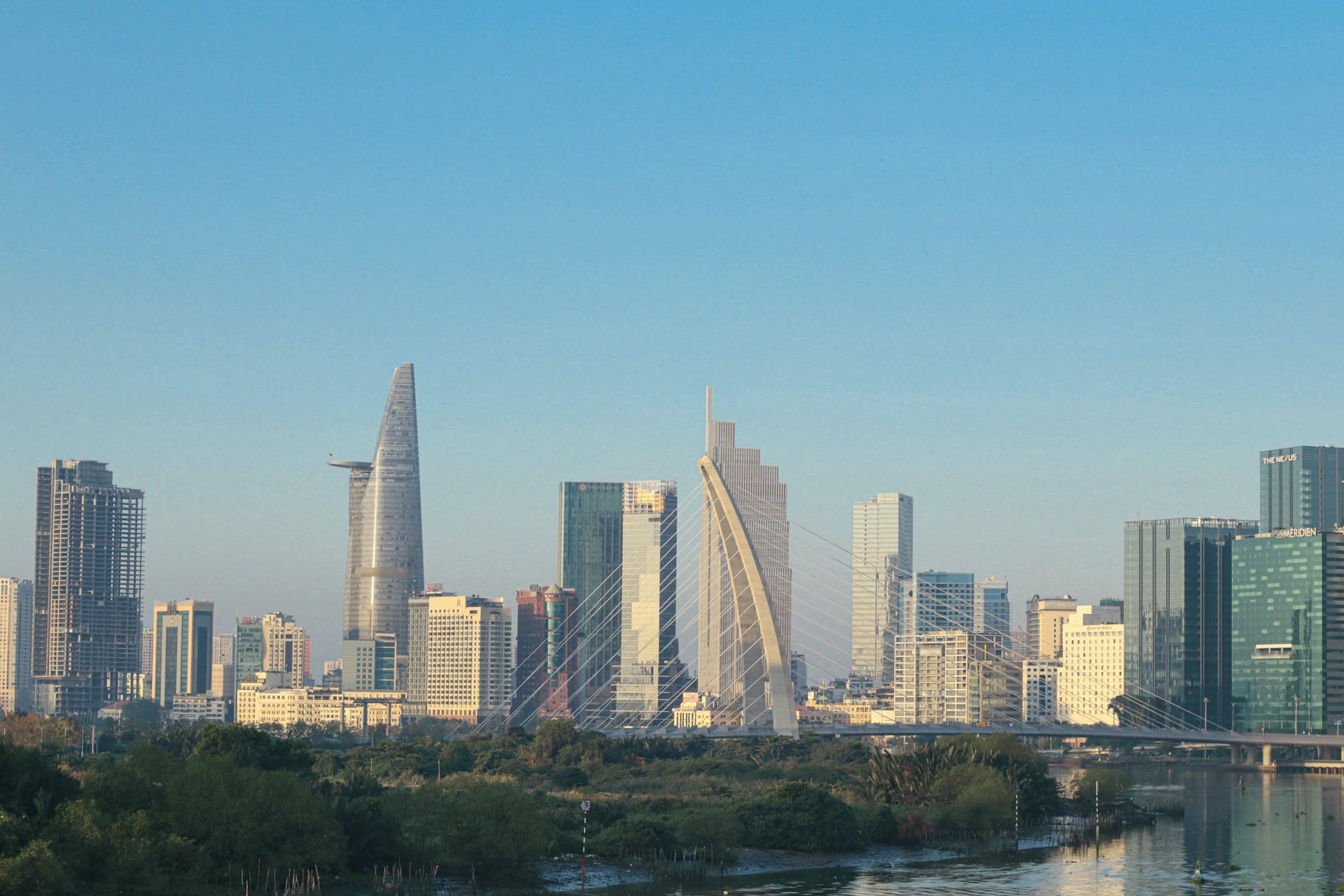
Every great Vietnam travel itinerary needs a strong start, and Ho Chi Minh City delivers. This southern metropolis is bold, flavorful, and full of life. You’ll step into streets where French-colonial architecture meets modern energy, and scooters glide past steaming food stalls before sunrise. Beginning your Vietnam trip here helps you dive straight into the country’s rhythm without delay.
Weather tip: Ho Chi Minh City has a tropical climate with two seasons. The dry season runs from December to April, with sunny skies and lower humidity. The rainy season, from May to November, brings brief but heavy afternoon showers. It rarely rains all day, so a light poncho and flexible plans are enough to keep going.
Getting around: Most sights in central Saigon are walkable if you stay in District 1. For longer distances, use Grab, which is Vietnam’s version of Uber, for both cars and motorbikes. Avoid rush hours from 7 to 9 AM and 4:30 to 6:30 PM.
Day 1: Ease into the city rhythm
Touching down in Ho Chi Minh City, you’ll immediately feel the energy. Scooters weave past mustard-yellow buildings, the scent of grilled pork drifts from alleyway eateries, and sidewalk cafes buzz with morning conversations. After checking into your hotel in District 1 or District 3, head out for a late breakfast or early lunch. Try cơm tấm at Cơm tấm Ba Ghiền, or opt for bún thịt nướng with fresh herbs and fish sauce for something lighter but just as flavorful.
If you’re hungry for more ideas, check out our guide to the best breakfast in Saigon.
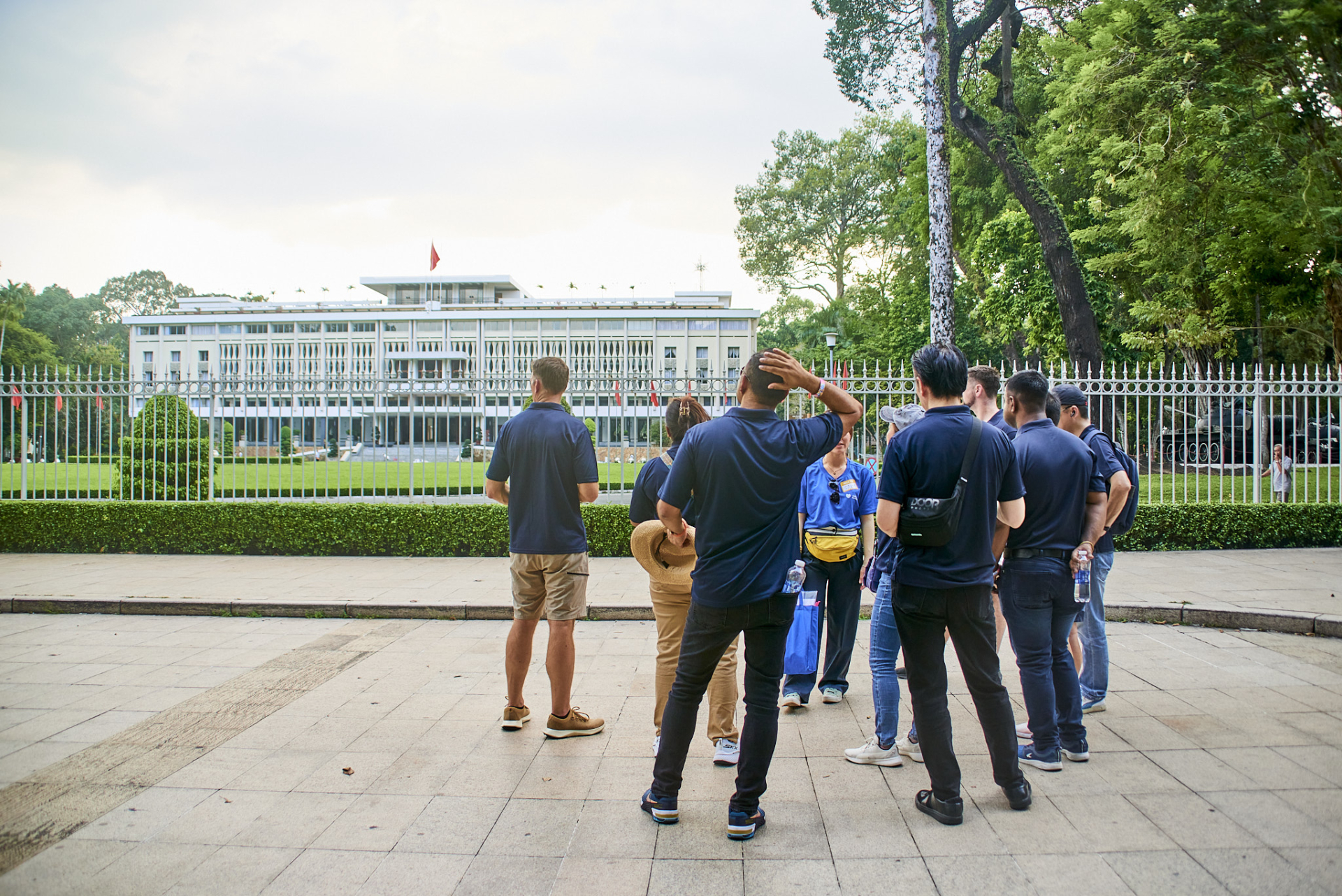
Spend your afternoon exploring Saigon’s colonial heart. Start at the Central Post Office, designed by Gustave Eiffel, then walk across to see Notre-Dame Cathedral of Saigon. Even if it’s under restoration, its red-brick façade and twin bell towers still make a strong impression. A short stroll away is the Reunification Palace, frozen in the decor and atmosphere of the 1970s. Walk through its command rooms and rooftop helipad to get a feel for Vietnam’s recent history. If you need a break, Tao Dan Park nearby offers a cool and leafy pause from the city heat.
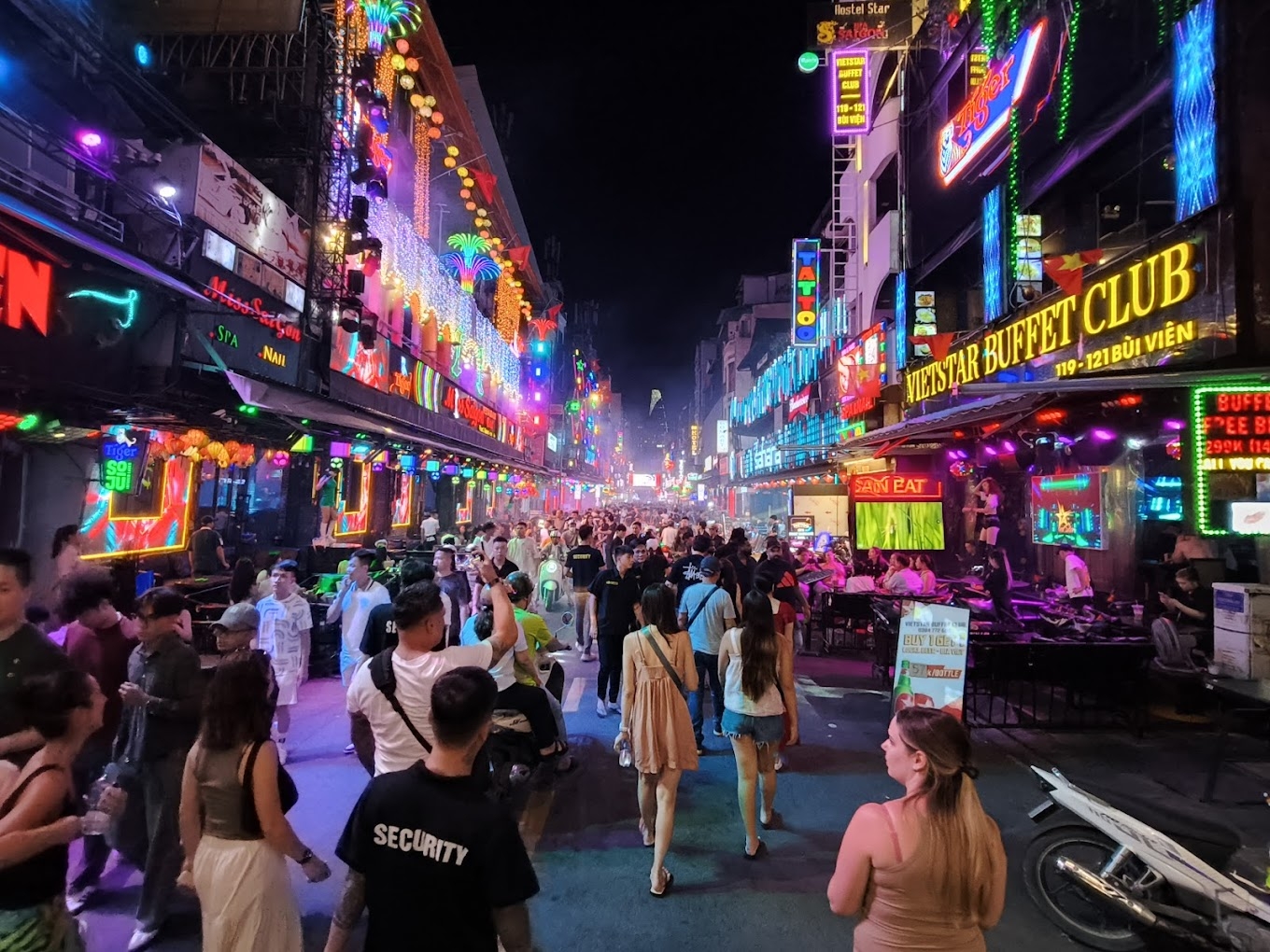
As evening sets in, start with a classic banh mi Saigon from a popular street cart like Bánh mì Huỳnh Hoa, then walk to Nguyen Hue walking street, where locals gather under the lights of the colonial-era City Hall. The wide pedestrian avenue buzzes with kids on rollerblades, street performers, and families out for an evening stroll. It’s a fun, easy way to soak up the city’s atmosphere. From there, if you’re up for more action, head to Bui Vien Walking Street in the backpacker district. This chaotic stretch is packed with street food, beer towers, live music, and neon-lit energy that goes well into the night.
If you’re looking to dig deeper into Saigon, we’ve got more for you. Our one-day Ho Chi Minh City itinerary shows you how to see the best of the city without rushing, while this district-by-district guide helps you understand where to stay and what to expect from each neighborhood. For foodies, don’t miss our list of the top street food places to try everything from hủ tiếu to bánh mì. Night owls will enjoy our guide to Saigon after dark, and if you want something more offbeat, here are 25 unusual things to do in Ho Chi Minh City that most tourists miss.
Day 2: Dive deeper into local Saigon
Now that you’ve settled into the rhythm of Saigon, day two is all about getting under the surface. Start your morning with the Saigon Off-the-Beaten-Path Cycling Tour. This half-day small-group experience is designed to be gentle and eye-opening, even for first-time cyclists. You’ll ride through quiet alleyways, canal-side paths, and urban temples, far from the tourist track. Along the way, you might stop to taste fresh tofu at a family-run stall, chat with a broom maker in a hidden courtyard, or enjoy snacks you’ve never seen before.
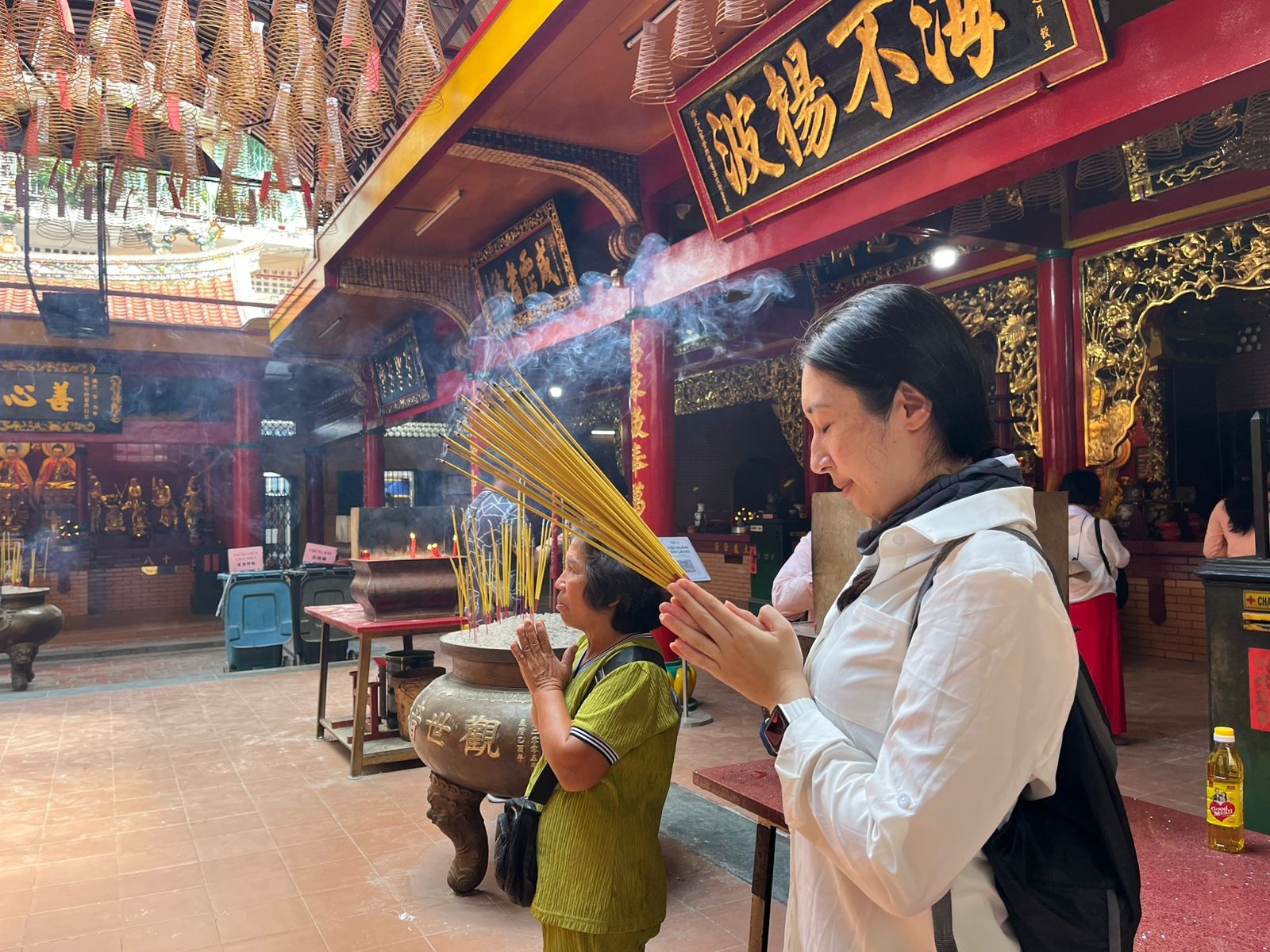
After the tour, enjoy a well-earned lunch with classic Vietnamese lunch, such as grilled pork with broken rice, sour tamarind soup, or stir-fried morning glory. Many restaurants in District 1 serve these home-style meals with iced tea and tropical fruit to finish. Once refueled, head west to Cho Lon and explore Saigon’s historic Chinatown. Wander through herbal shops, incense-filled temples, and old apartment blocks bustling with activity. If you still have time, cross the river to District 2 and wind down in Thao Dien’s leafy cafés or creative spaces. This quiet corner is perfect for a coffee, cocktail, or early dinner before your evening plans.
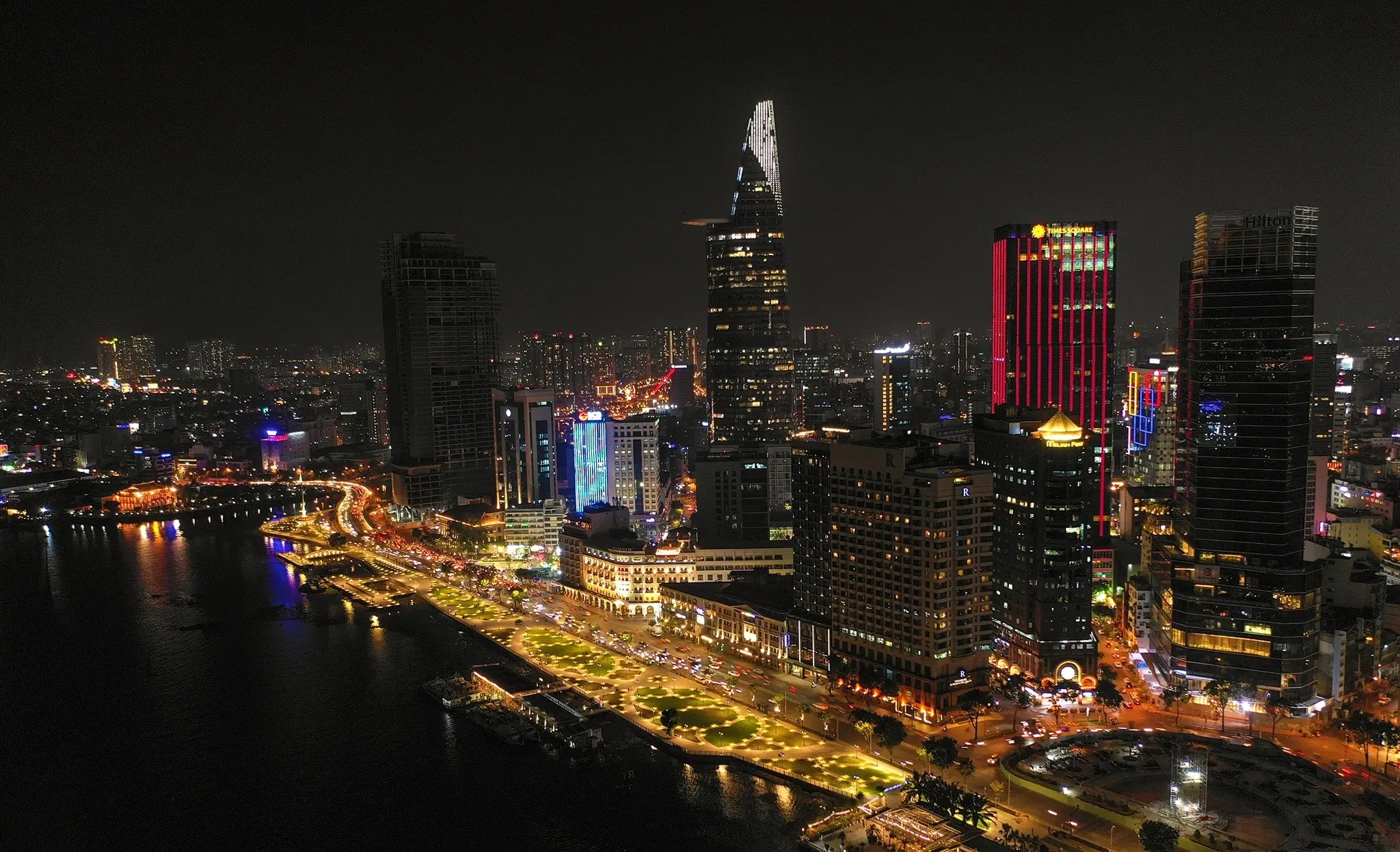
If you’re continuing your journey to the Mekong Delta, prepare for an early morning transfer or book an overnight sleeper bus. Otherwise, wind down your night with a walk along Bach Dang Wharf Park or join a short sunset cruise on the Saigon River.
Budget: Plan for 50–70 USD per day, including accommodation, meals, and activities. Street food is budget-friendly at 1–2 USD per dish, and the cycling tour offers excellent value for a half-day of immersive experience.
Day 2-3: Can Tho
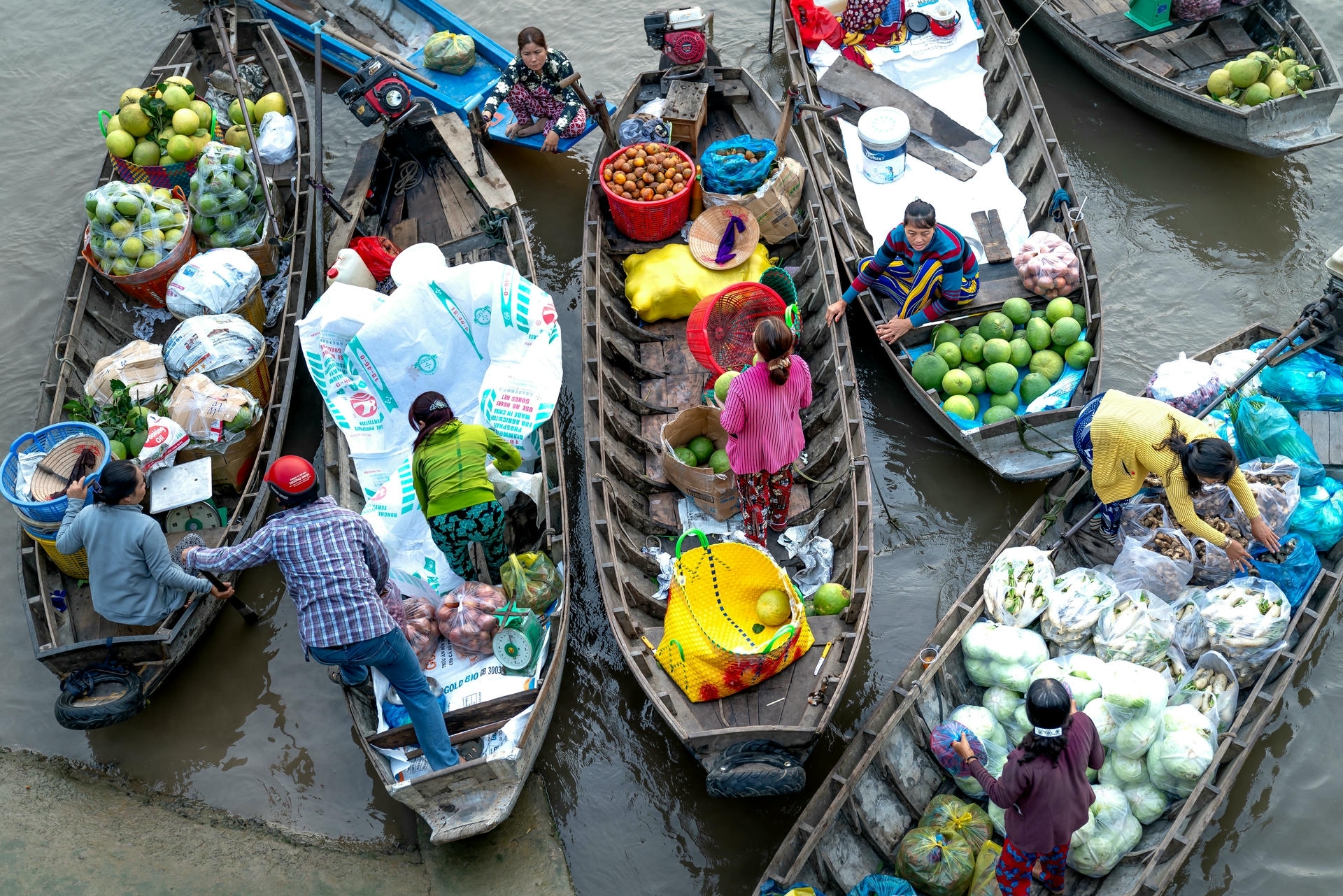
From the rush of Ho Chi Minh City, your Vietnam travel itinerary shifts into the calm of the Mekong Delta. Can Tho is the cultural and economic center of the region, known for its riverside charm, floating markets, and warm local hospitality. This is the perfect place to slow down and connect with Vietnam’s countryside life.
How to get to Can Tho
Can Tho is about 165 kilometers southwest of Ho Chi Minh City. For a relaxed start, book a limousine van with companies like Futa Bus or TCB Express (3.5 to 4 hours, from 200,000 VND or $8). If you’re short on time, consider a 5 AM departure to catch the floating market at sunrise and return the same day. For those who prefer to move at a slower pace, sleeper buses from the night before or a private transfer allow you to arrive rested and ready. Staying overnight lets you explore with more ease and gives access to early-morning river life without a rush.
Where to stay in Can Tho (optional)
If you choose to spend the night, look for riverside stays near Ninh Kieu Wharf. Green Village Mekong offers peaceful garden rooms with canoe access, while Azerai Can Tho provides a high-end retreat on a private islet. Homestays like Hung’s Garden on Con Son Islet also offer immersive local hospitality.
What to do in Can Tho
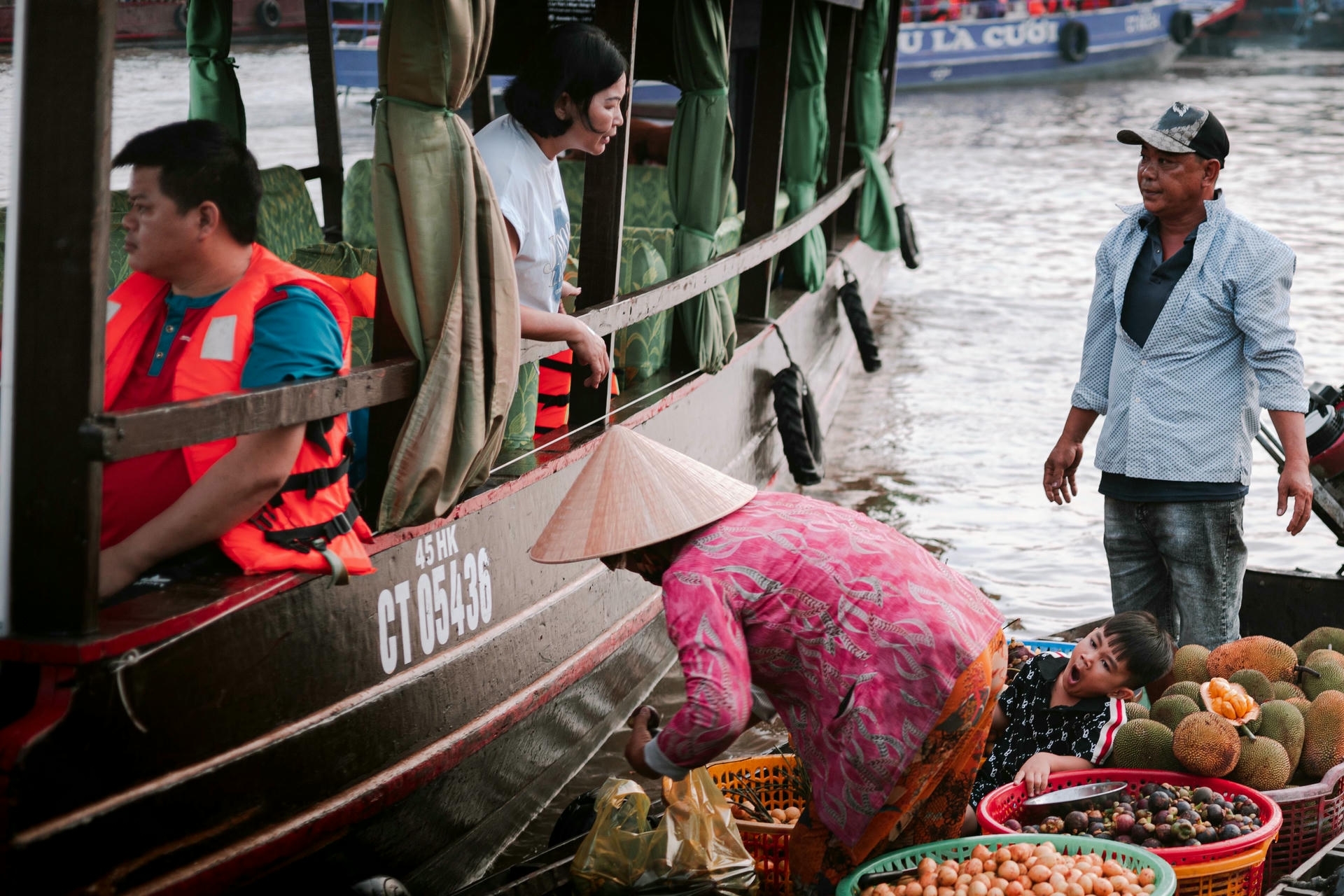
Start your morning early with a boat ride to the Cai Rang Floating Market, one of the last authentic floating markets in the Mekong Delta. Wooden boats loaded with pineapples, pumpkins, and steaming bowls of noodles crowd the river before sunrise. Vendors hang samples of their produce on tall bamboo poles to advertise. Breakfast here could be a bowl of hot hủ tiếu served from a rocking sampan. After exploring the market, head to a nearby traditional rice noodle workshop like Lo Chin Cua or Lo Sau Hoai to see how Can Tho’s signature noodles are made by hand using age-old techniques. You can even try pouring your own rice sheet and hang it to dry.
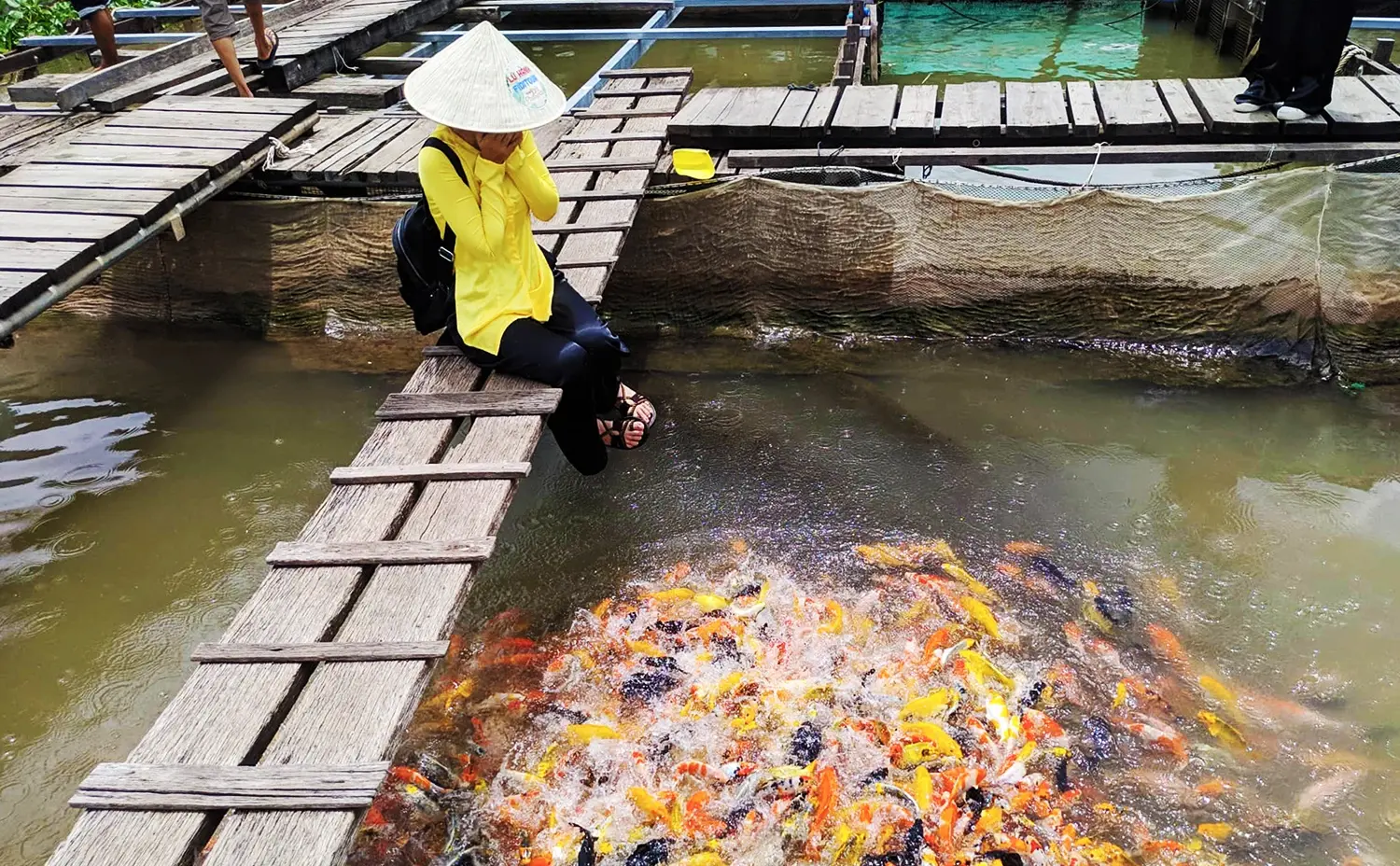
Around mid-morning, take a boat to Con Son Islet, a peaceful community where each household hosts a different hands-on experience. You can try making bánh lá mít, watch the famous jumping snakehead fish, or walk shaded garden paths filled with tropical fruit. Lunch here is typically home-cooked, served riverside, and full of local specialties like caramelized fish, sautéed gourds, and fresh herbs.
In the afternoon, cross back to the mainland. If time allows, visit the French-Vietnamese style Binh Thuy Ancient House, or stop at Muoi Cuong Cacao Farm, a family-run estate with fresh chocolate tastings and a legacy dating back to the 1960s.
This stop in Can Tho offers a grounding midpoint in your Vietnam travel itinerary. It contrasts the city life of Saigon and prepares you for the fresh air of Da Lat next.
For more inspiration, check out our full list of 25 best things to do in Can Tho Vietnam.
Budget: Around 1,200,000 to 2,000,000 VND ($50–80) for transport, boat tours, meals, and entrance fees. Overnight stays range from 400,000 to 3,000,000 VND ($16–120) depending on comfort level.
Day 4–5: Da Lat
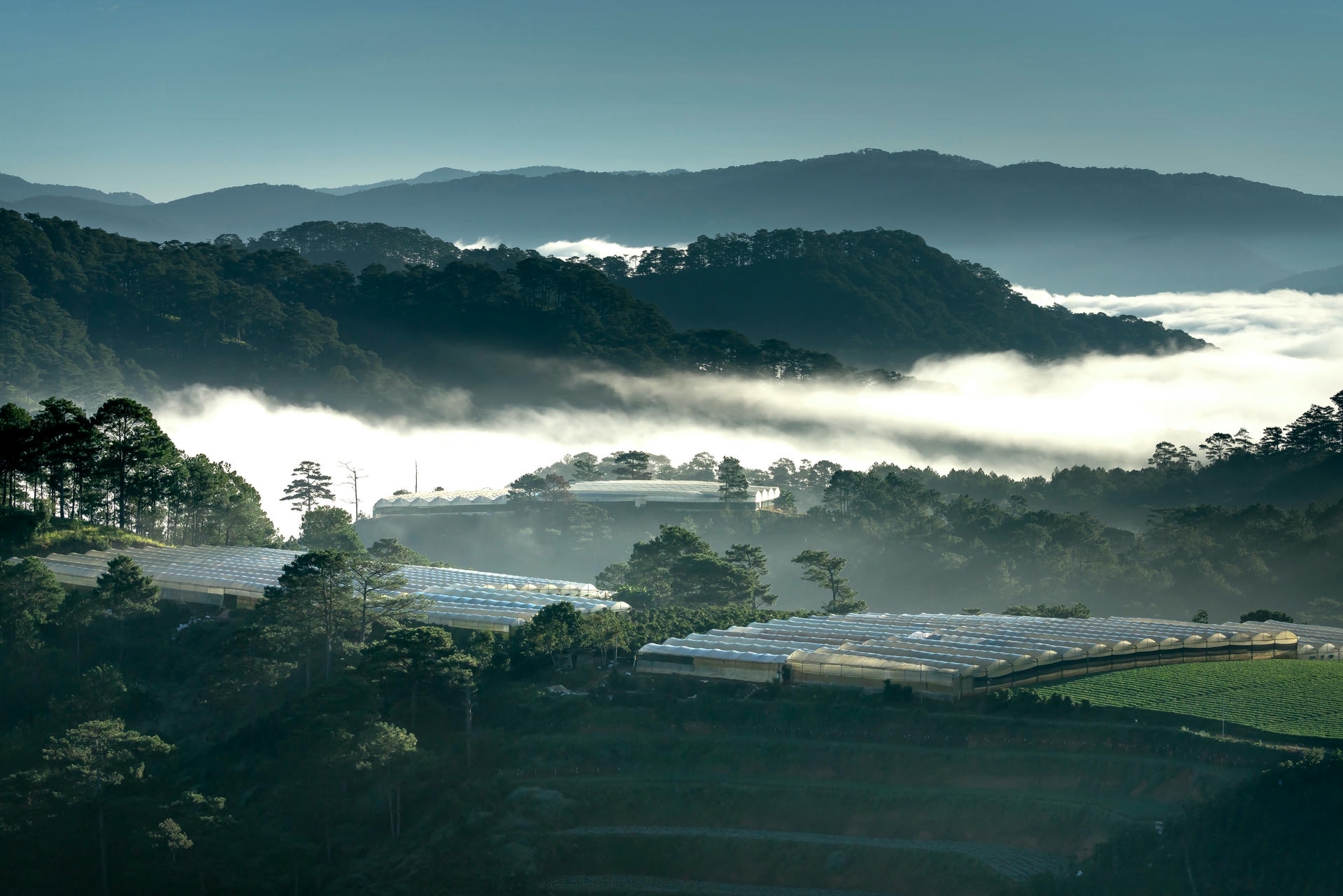
Your Vietnam travel itinerary now takes you to Da Lat, a cool-weather retreat in Vietnam’s Central Highlands. Sitting at 1,500 meters above sea level, Da Lat is known for pine forests, flower gardens, colonial villas, and a romantic charm that contrasts sharply with the Delta and the city. It is a favorite stop for nature lovers, couples, and anyone in need of fresh air.
How to get to Da Lat
From Can Tho or Ho Chi Minh City, the fastest route is flying. Morning flights from Saigon to Da Lat’s Lien Khuong Airport take about 1 hour. From the airport, it’s a 45-minute ride to the city center by taxi or shuttle. If you’re watching your budget or prefer land travel, take a sleeper bus the night before. Buses depart from Saigon around midnight and arrive in Da Lat early in the morning, letting you wake up in the mountains.
What to do in Da Lat
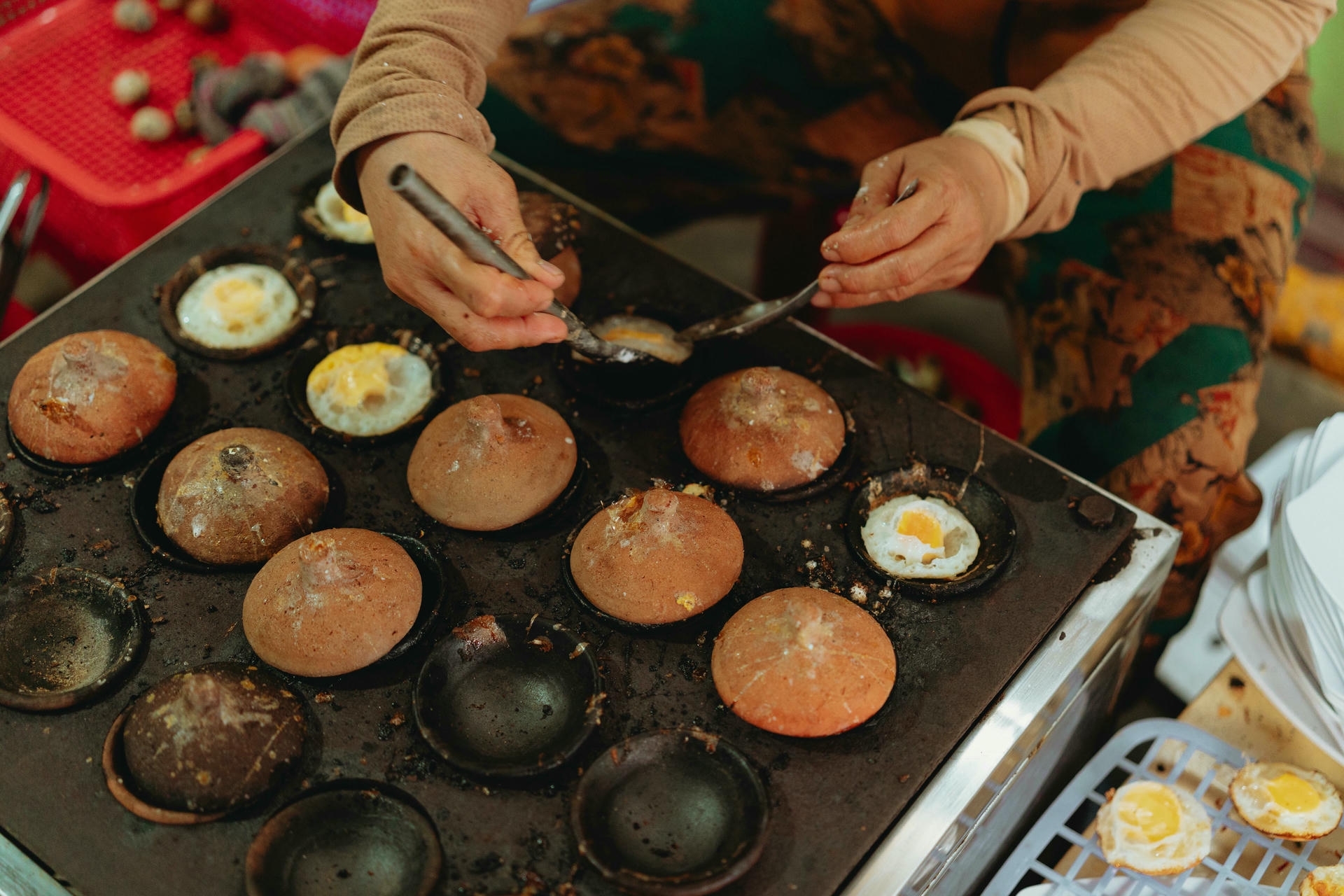
Arriving in Da Lat on a crisp highland morning, start your day like the locals with a warm cup of coffee. Near the central market, you’ll find carts serving strong Vietnamese drip or old-school cafes like Tung Coffee, where morning regulars sip slowly as the mist fades. Walk over to Tang Bat Ho street for breakfast where mini rice cakes sizzle on charcoal stoves, or try Bánh ướt lòng gà Long with silky rice sheets, chicken, and fragrant herbs.
After breakfast, head south of the city to Robin Hill and board the scenic cable car to Truc Lam Zen Monastery. You’ll glide above pine forests and see Tuyen Lam Lake stretch into the horizon. The monastery grounds are peaceful, with bonsai trees and views over the valley. Just a few minutes away is Datanla Waterfall. For a bit of excitement, take the alpine coaster down to the falls and walk the shaded trails along the water.
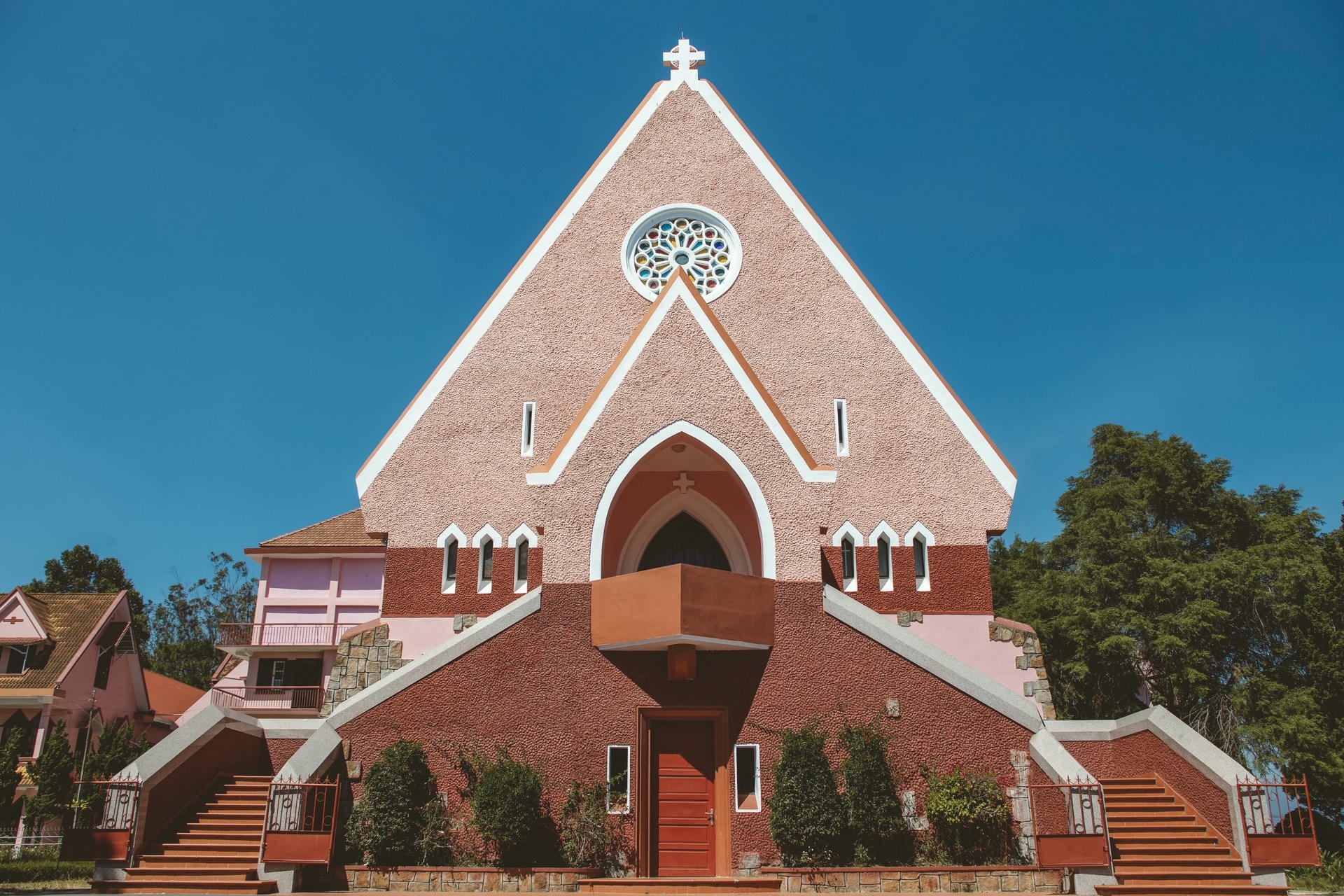
By noon, make your way to the Trai Mat area and enjoy a home-style meal at Cơm nhà Linh. The set menu typically includes braised tofu, sautéed local greens, and savory soups, all cooked with seasonal mountain produce. In the afternoon, board the vintage train from Da Lat Railway Station and ride 7 kilometers to Linh Phuoc Pagoda, famous for its mosaic dragon and bottle-covered temple halls. On your way back, stop at Domaine de Marie Church with its pale pink facade, or explore the quirky Crazy House with winding stairs and surreal rooms.
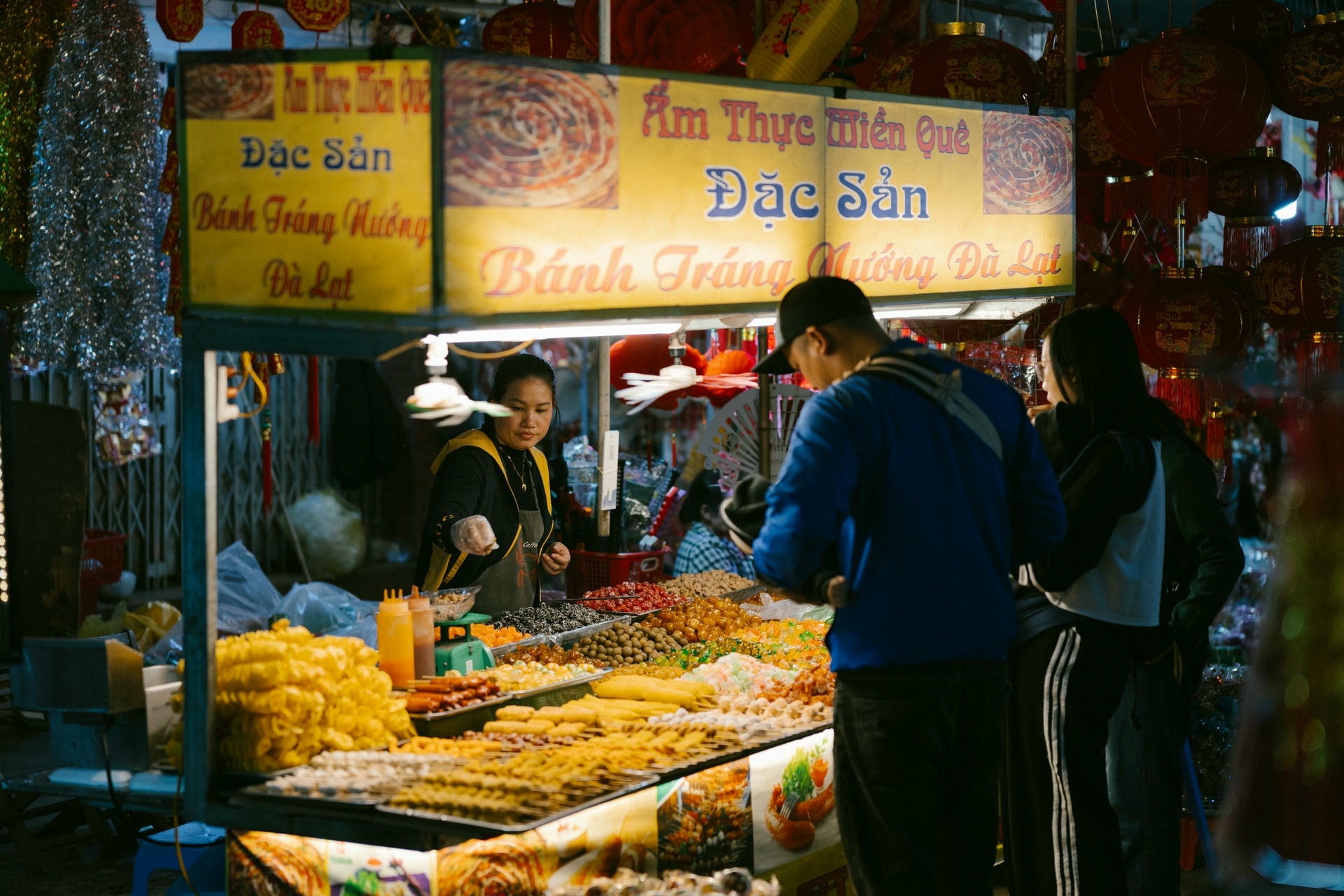
As evening sets in, grab dinner at Lẩu bò Nhà Gỗ, a cozy wooden house restaurant serving hotpot with tender beef, mountain vegetables, and fermented tofu. Afterward, stroll through the Da Lat Night Market. Don’t miss street bites as bánh tráng nướng, or Vietnamese pizza, a cup of hot soy milk at Dung Beo or sweet grilled corn as you browse for knitwear, dried persimmons, and handmade souvenirs under the chilly night sky.
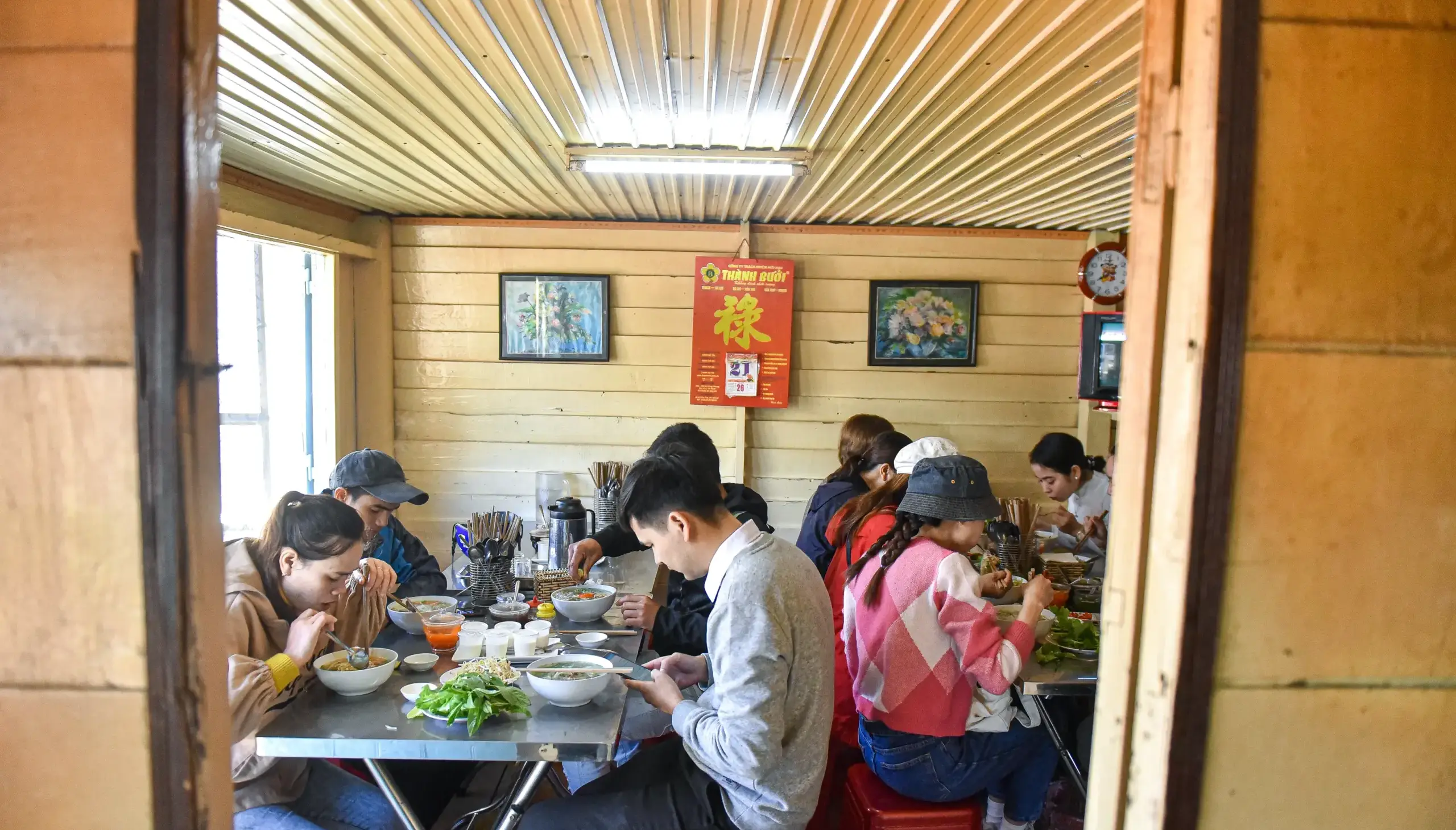
If you’re an early riser, consider joining a sunrise trip to Langbiang Peak or a cloud-hunting hilltop just outside town. The morning mist rolling over pine-covered slopes is one of Da Lat’s most iconic sights. After your morning adventure, head back into town and warm up with a steaming bowl of pho at Phở Uyên, where the beef is tender and the broth is deep with flavor.
Once you’ve eaten, wander through the Da Lat Market one last time or take a walk around the quiet streets nearby. Stop by Lien Hoa Bakery to pick up sponge cake or mung bean pastries for the road. If time allows, swing by the Da Lat Cathedral, also called the Chicken Church, known for its pink tower and peaceful courtyard.
Plan to leave the city around 11:00 AM. It takes about 40 minutes to reach Lien Khuong Airport, so make sure to give yourself a buffer for traffic or weather. If you’re flying to Phu Quoc next, it’s a good idea to have a light lunch before your flight or bring snacks from the market to enjoy on the way.
Want to go deeper? Explore our full list of 25 unusual things to do in Da Lat.
Budget: Expect to spend 1,200,000 to 2,000,000 VND ($50–80) per day for food, transport, and attractions. Luxury stays or private tours may increase this to 3,000,000 VND ($120).
Day 5-6: Phu Quoc Island
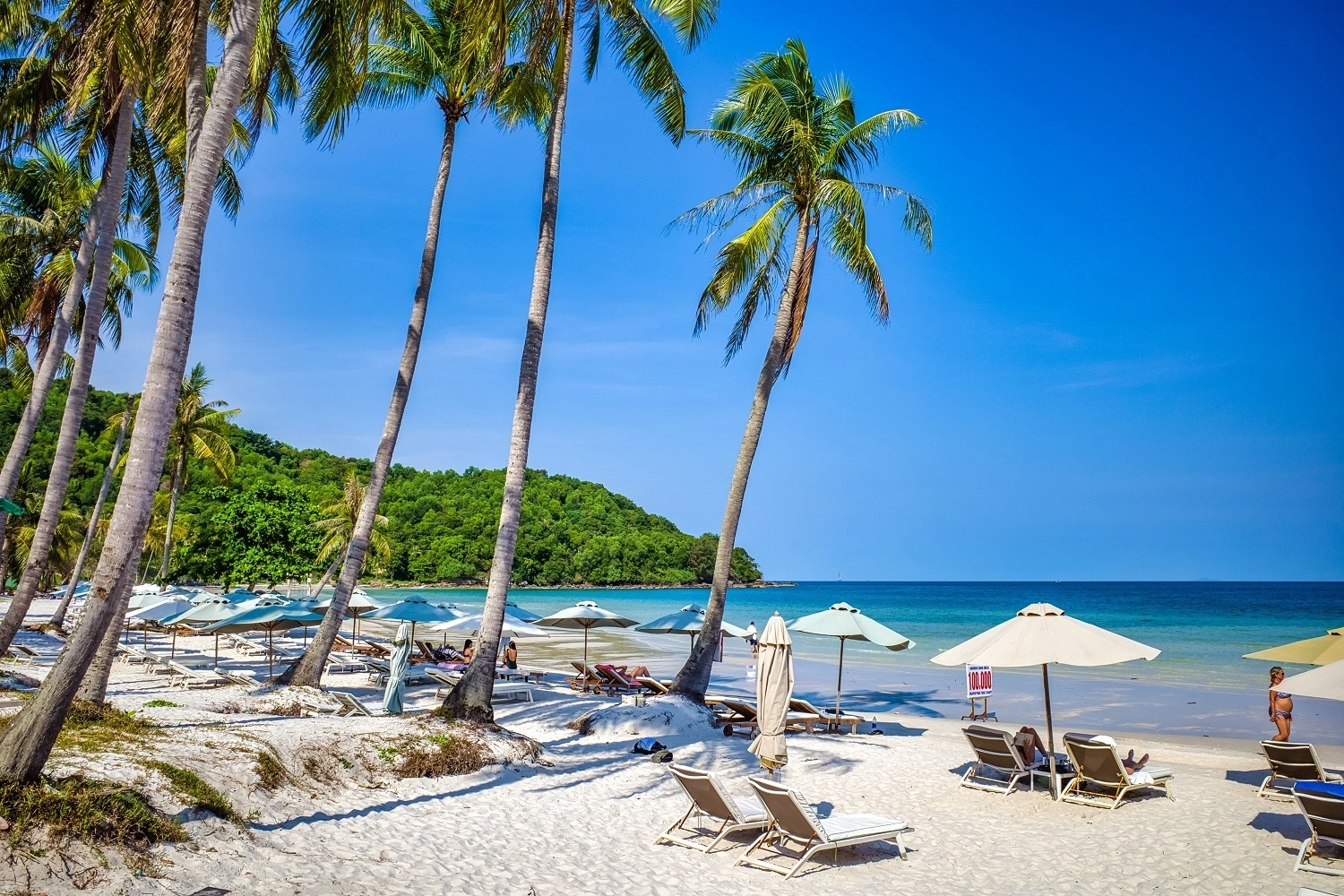
No Vietnam travel itinerary feels complete without time by the sea. Phu Quoc Island offers the perfect finale, with golden beaches, lush forests, vibrant night markets, and some of the freshest seafood in the country. After the cool highlands of Da Lat, this tropical island invites you to slow down and enjoy.
How to get to Phu Quoc
From Da Lat, you can fly to Phu Quoc via a short connection in Ho Chi Minh City. Most flights take four to five hours total, including layover time. Once you land at Phu Quoc International Airport, it’s a 20 to 30-minute drive to most resorts along Long Beach. Pre-arranged transfers are smooth, and taxis are readily available.
What to do in Phu Quoc
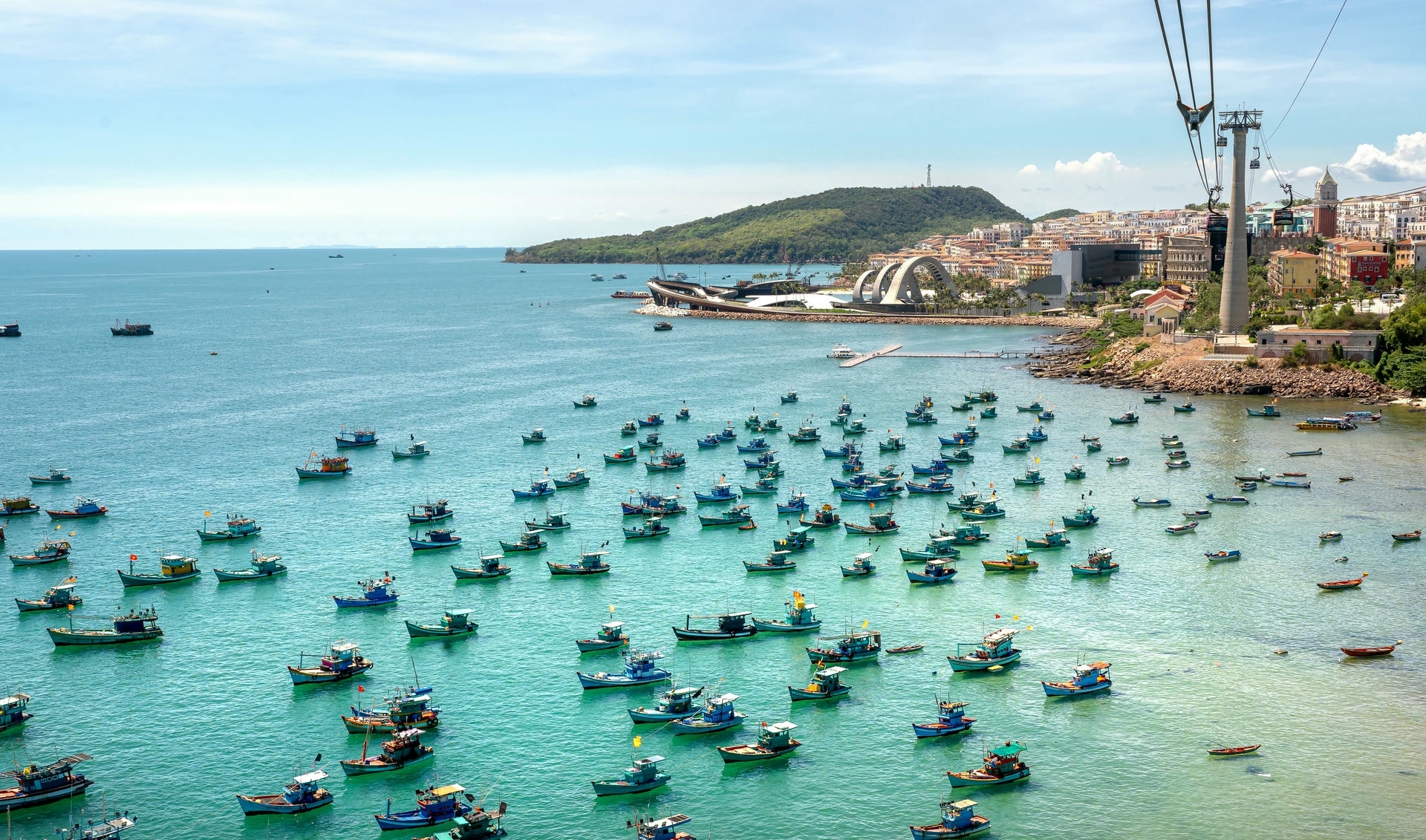
After settling into your stay, have lunch at Ra Khơi Restaurant, a local favorite for grilled mackerel, seafood hotpot, and sour soups made with starfruit. In the afternoon, visit Rach Vem fishing village in the north. During dry season (November to April), the shallow waters fill with red starfish. Walk on bamboo bridges and sip fresh coconut juice in floating huts over the sea.
On your way back, stop at Cua Can to enjoy honey coffee in a garden cafe or explore a pepper farm. Phu Quoc’s pepper is known for its heat and aroma, and you can buy it directly from local producers.
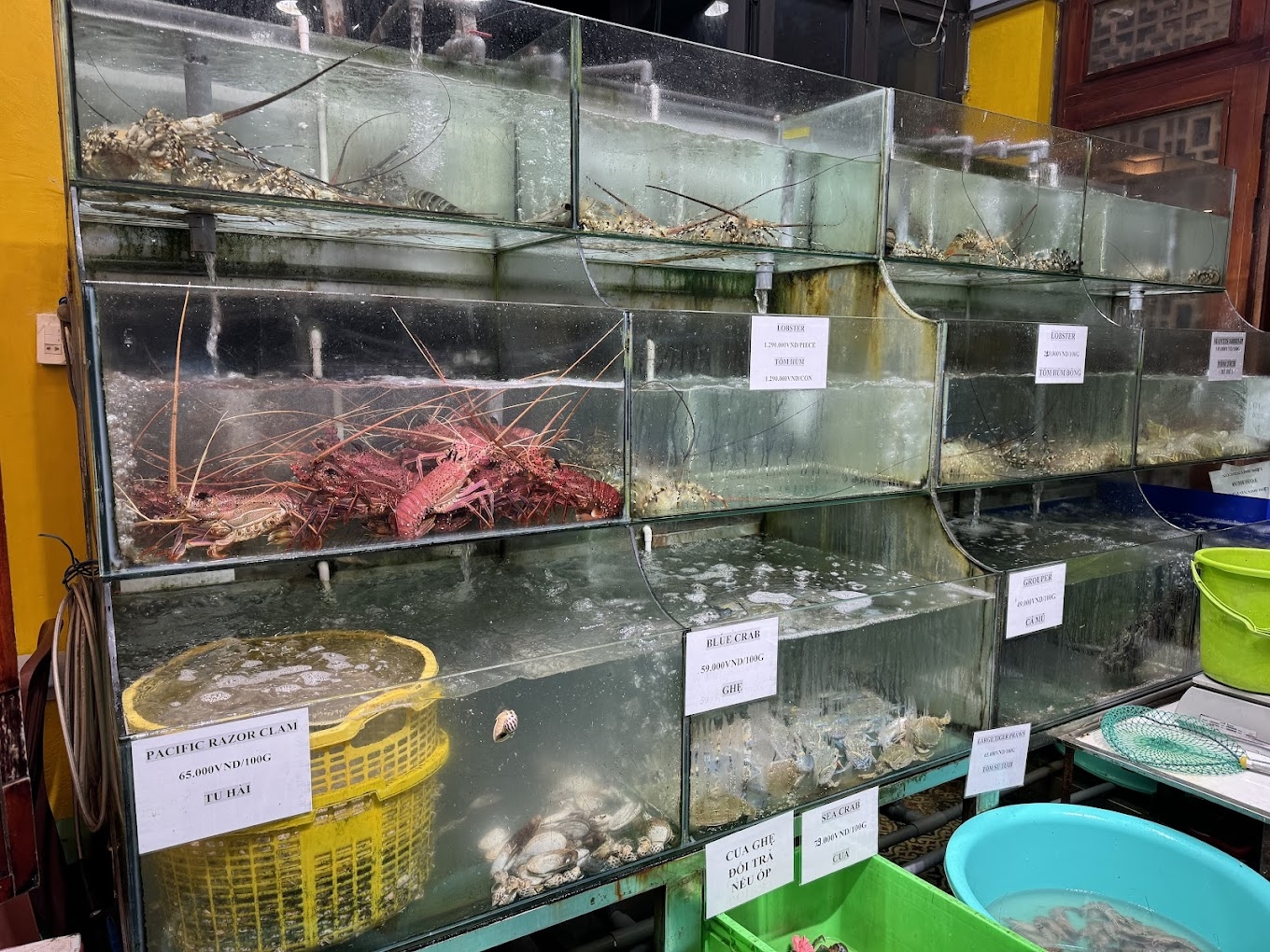
Dinner at Xin Chao offers beachfront views with standout dishes like tamarind crab and grilled scallops. Afterward, visit the Phu Quoc Night Market. It comes alive after dark with seafood stalls, tropical fruits, pearl jewelry, and sweet snacks like grilled bananas and sticky rice.
For a unique local activity, book a short night squid fishing trip from Duong Dong Harbor. These boats sail out under the stars and use bright lights to attract squid. Even if you don’t catch much, the calm sea and starlit sky are worth the ride.

The next morning, start with bún quậy Kiến Xây, where you mix your own dipping sauce and enjoy freshly stirred seafood noodles. After breakfast, visit the Phu Quoc Pr ison Museum for a sobering look at wartime history, then head to Ho Quoc Pagoda for peaceful views over the sea.
If you want to explore more, take a half-day tour to the An Thoi Archipelago. Swim and snorkel at May Rut or Gam Ghi islands, or relax on the powdery sands of Bai Sao or Bai Kem. Return by late afternoon for sunset cocktails at Bittersweet Bar, a quiet lounge with ocean views and a cozy vibe.
For more insider tips, read our guide to 25 best things to do in Phu Quoc.
Budget: Expect to spend around 1,500,000 to 2,200,000 VND ($60–90) per day. If adding island tours, luxury dining, or spa time, costs may rise to 3,000,000 to 4,000,000 VND ($120–160).
Day 7: Departure from Phu Quoc
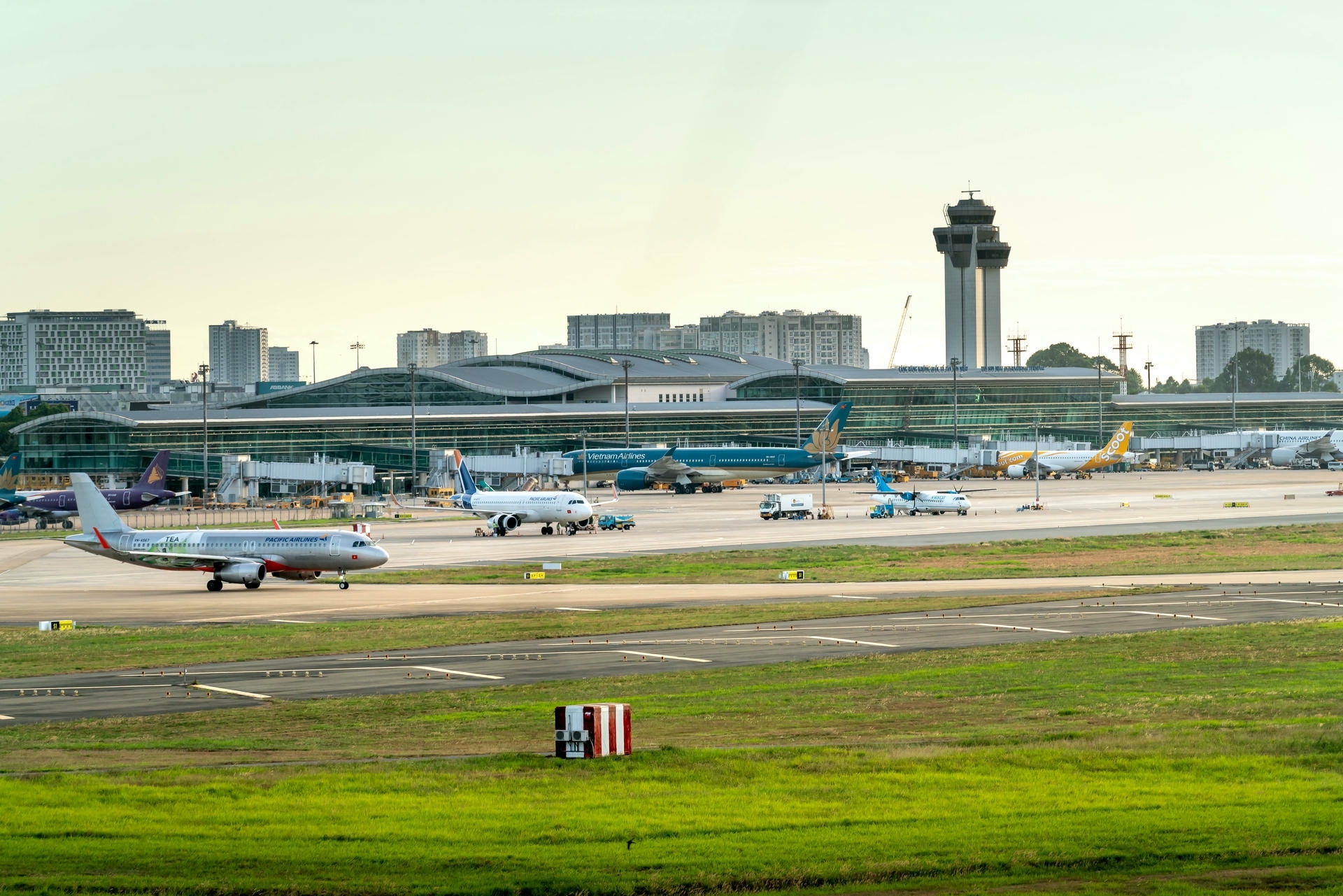
Your 7-day Vietnam travel itinerary comes to a gentle close on the shores of Phu Quoc. Start your final morning with a relaxed breakfast at your hotel, or head out for one last bowl of hủ tiếu or tropical fruit smoothie by the beach.
Most travelers take a short domestic flight from Phu Quoc back to Ho Chi Minh City to connect with their international flight. The journey takes just under one hour, but make sure to book flights that allow enough time for check-in and transfers. Phu Quoc International Airport is small and efficient, but it is best to arrive early, especially during peak season.
To avoid airport stress, plan to leave for Tan Son Nhat Airport at least three hours before your flight. Traffic in Ho Chi Minh City can be unpredictable, especially in the afternoon. Use this final ride to reflect on your journey, from the markets of Saigon to the cool hills of Da Lat and the gentle waves of Phu Quoc.
For a last-minute gift or keepsake, browse our Ho Chi Minh City souvenir guide. Thoughtful choices include locally grown coffee, handmade textiles, ceramic tableware, and small batches of fish sauce or cashew snacks. These bring a bit of Vietnam home with you.
What’s next after this 7-day Vietnam travel itinerary?
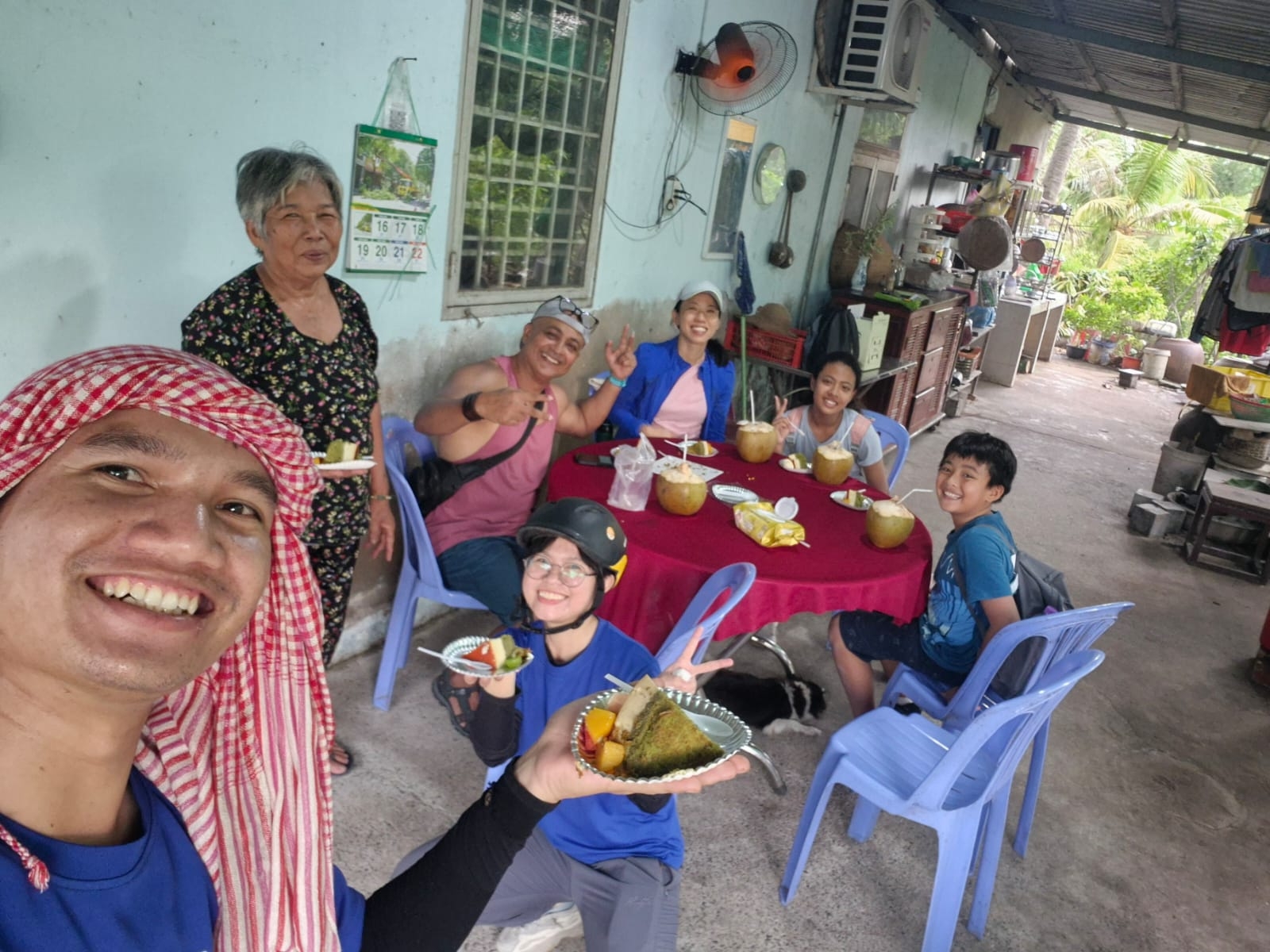
Seven days often feel like just the beginning. Many travelers finish this one-week Vietnam travel itinerary and realize they’ve only scratched the surface. A 10-day or 14-day Vietnam travel itinerary allows you to head north and discover even more. Add Hue for imperial history and slow riverside walks, or stop in Da Nang for modern city vibes and easy access to quiet beaches. If you’re headed further, Hanoi offers a totally different rhythm and flavor, ideal for contrasting the South’s energy with the North’s tradition.
Those planning a longer Vietnam travel itinerary can shape your route based on season and interest. Are you dreaming of a motorbike journey through the Ha Giang Loop? Highland trekking in Sapa? Or hidden islands and off-the-grid adventures? Our guide to the best time to visit Vietnam can help you plan. You can also explore our curated list of the best things to do in Vietnam or go deeper with our Vietnam adventure guide. No matter how far you travel, the most rewarding Vietnam itineraries come from taking time to truly connect.
Want your Vietnam travel itinerary to feel more local?
If this 7-day Vietnam travel itinerary speaks to you, chances are you are not just here to check off boxes. You are here to feel the rhythm of a place, to meet people where they are, and to leave with stories worth retelling. That is exactly why Jackfruit Adventure exists. We are a local team based in Vietnam, creating small-group experiences that go beyond the usual.
After exploring Saigon your way, keep going with our Saigon Foodie Night Ride, a cycling experience through street food alleys, hidden neighborhoods, and local markets after dark. For a glimpse of life beyond the city, join our Escape to the Hidden Island: City to Serene Countryside tour, where riverboats and quiet farms replace traffic and noise. Curious about Saigon’s layered heritage? Our Trails of Quach Dam: Chinatown Discovery brings you face to face with its Chinese Vietnamese roots.
Whether you’re planning your first Vietnam travel itinerary or your fifth, these routes offer a deeper way to experience the country. Each route we design is led by locals, rooted in real communities, and built for travelers who want to go further, not faster. Ready for what is next?




